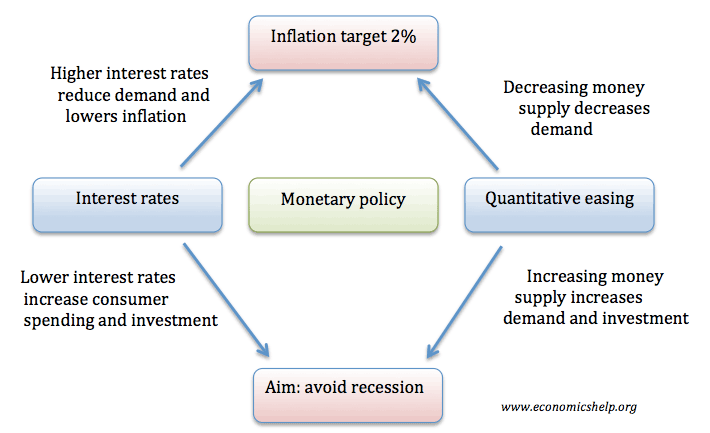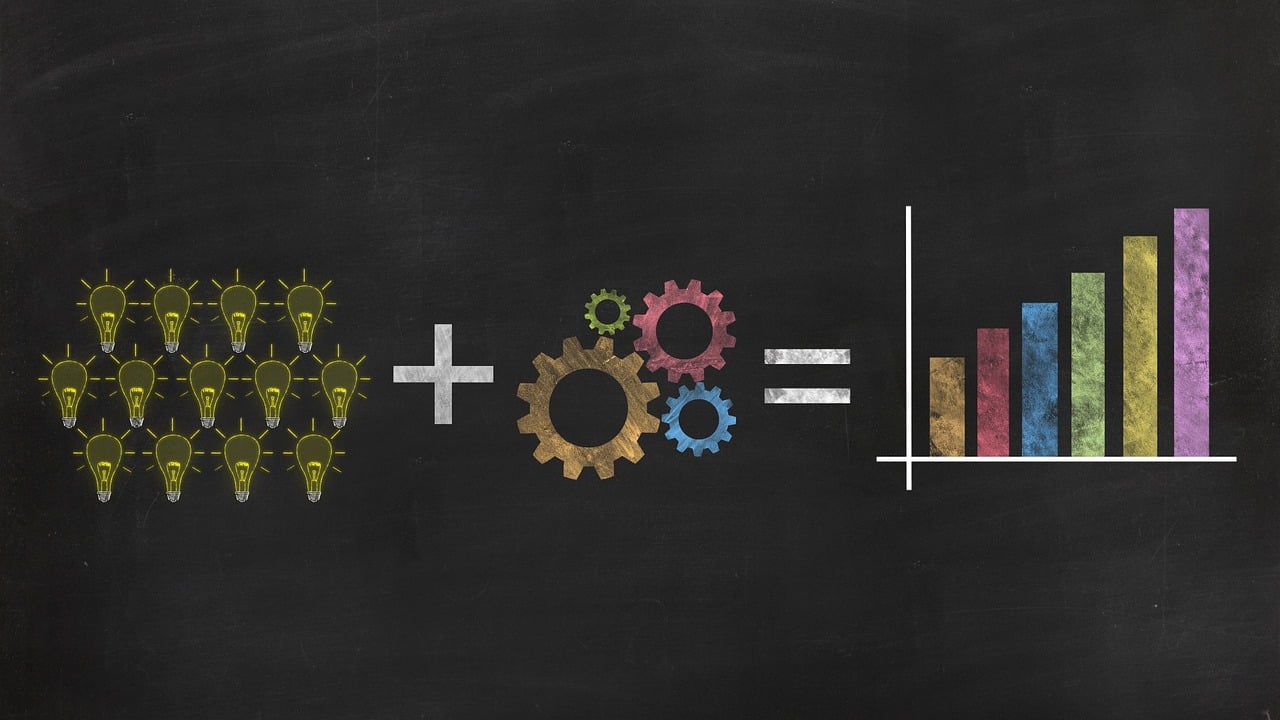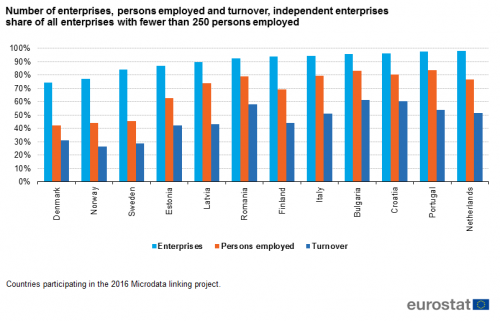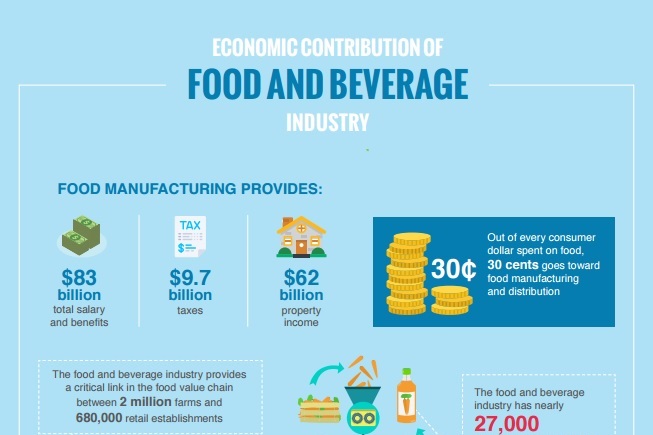Introduction
In the aftermath of World War II, Germany lay in ruins, its cities devastated and its economy in shambles. Yet, in a remarkable turn of events, the country would go on to achieve an astonishing economic recovery, earning the moniker “Wirtschaftswunder” or “The Economic Miracle.” This article delves into the incredible story of how Germany, through resilience, innovation, and international cooperation, transformed itself from a war-torn nation into an economic powerhouse.
The post-World War II era presented Germany with a monumental challenge—rebuilding a nation that lay in ruins, both physically and economically. The scale of devastation was staggering, with cities reduced to rubble, industries crippled, and a population grappling with the scars of war. However, what followed in the years to come was nothing short of extraordinary—a testament to Germany’s resilience, innovation, and the power of international cooperation.
Resilience in Adversity
The German people’s resilience played a central role in the country’s remarkable recovery. Faced with the enormity of destruction, individuals and communities rallied together to rebuild their homes and livelihoods. This collective determination, often referred to as the “German spirit,” was a driving force behind the nation’s resurgence.
Marshall Plan and International Assistance
International cooperation was a cornerstone of Germany’s economic revival. The Marshall Plan, initiated by the United States, provided crucial financial aid to European nations, including Germany. This aid injected much-needed capital into the German economy, enabling the reconstruction of infrastructure and industries. It was a shining example of how nations can come together to support the recovery of a war-torn region.
Innovation and Industrial Strength
Germany’s post-war recovery was characterized by a commitment to innovation and industrial excellence. The country leveraged its engineering prowess and a skilled workforce to rebuild and modernize its industries. Innovations in sectors like manufacturing, automotive, and chemicals drove economic growth. The “Made in Germany” label became synonymous with quality and precision, facilitating exports to global markets.
Social Market Economy and Reforms
Germany’s recovery was not solely focused on economic reconstruction but also on creating a fair and equitable society. The adoption of the social market economy model emphasized social welfare, workers’ rights, and a competitive market. These reforms laid the foundation for a balanced and prosperous society, where economic success was coupled with social progress.
European Integration
Germany’s path to recovery was closely tied to its integration into European institutions. The establishment of the European Coal and Steel Community (ECSC) in 1951 marked the beginning of European economic integration, with Germany playing a pivotal role. The subsequent formation of the European Economic Community (EEC) further solidified Germany’s ties with its European neighbors, fostering economic cooperation and stability.
The Fall of the Berlin Wall and Reunification
The fall of the Berlin Wall in 1989 and the subsequent reunification of East and West Germany were pivotal moments in the nation’s history. The integration of East Germany presented both economic challenges and opportunities. It required massive investments in infrastructure, education, and industry. However, the reunification process showcased Germany’s commitment to unity and provided a significant economic boost in the long run.
In conclusion, Germany’s post-World War II economic recovery, often referred to as “The Economic Miracle” or “Wirtschaftswunder,” is a remarkable chapter in world history. It was achieved through a combination of resilience, international assistance, innovation, and social reforms. Germany’s ability to transform itself from a war-torn nation into an economic powerhouse stands as a testament to the determination of its people and the possibilities that arise when nations collaborate for the greater good. Today, Germany’s status as a leading global economic player is a living legacy of its post-war recovery and a testament to the enduring spirit of innovation and cooperation.
Explore this link for a more extensive examination of the topic: The Economics of the Second World War: Seventy-Five Years On
At the end of World War II in 1945, Germany faced a grim reality. Its infrastructure, industrial capacity, and cities were in ruins. The economy had collapsed, and millions of people were displaced. The challenges were immense, but the spirit of reconstruction was unwavering.
The post-World War II landscape in Germany indeed presented a daunting set of challenges that tested the resilience and determination of the nation and its people. The aftermath of the war left scars that ran deep, both physically and emotionally, but it also marked the beginning of a remarkable journey of recovery, reconstruction, and renewal.
Rubble and Ruins: The devastation that Germany endured during World War II was unparalleled. Cities lay in ruins, with iconic landmarks reduced to rubble. Infrastructure, including roads, bridges, and railways, had been heavily damaged or destroyed. The sheer scale of destruction presented an overwhelming task of rebuilding not just structures but also the very fabric of society.
Economic Desolation: The German economy had been shattered by the war’s end. Industries that once fueled the nation’s prosperity were in ruins, and the workforce had been decimated. Hyperinflation and economic instability compounded the challenges, leaving a population grappling with scarcity and hardship.
Humanitarian Crisis: Millions of people were displaced, both within Germany and from neighboring countries. Refugees, many of them survivors of the war’s horrors, faced dire circumstances. The immediate priority was to provide food, shelter, and medical care to those in need, and this humanitarian effort required both national and international cooperation.
The Marshall Plan and International Support: Germany’s reconstruction was not a solitary endeavor. The Marshall Plan, a comprehensive U.S. aid program, provided substantial financial assistance to European nations, including Germany, to aid in their recovery. This support was instrumental in jump-starting the reconstruction process.
Wirtschaftswunder: The Economic Miracle: The commitment to reconstruction was unwavering, and it bore fruit in the form of the “Wirtschaftswunder” or economic miracle. Germany’s rapid economic recovery in the post-war years was nothing short of remarkable. Investment in key industries, the development of a skilled workforce, and an export-oriented approach fueled the nation’s resurgence.
European Integration and Peace: Germany’s commitment to reconciliation and peace was evident in its role as a founding member of the European Coal and Steel Community, a precursor to the European Union. This commitment to European integration was a strategic move to ensure lasting peace and stability on the continent.
Lessons of Resilience: The post-war reconstruction of Germany serves as a powerful testament to the resilience of a nation and its people. It illustrates how determination, cooperation, and a shared vision can overcome seemingly insurmountable challenges. Germany’s transformation from a war-ravaged nation to an economic powerhouse is a source of inspiration and a reminder of the human capacity for recovery and renewal.
In conclusion, the end of World War II presented Germany with a grim reality, but it also marked the beginning of a remarkable journey of reconstruction and renewal. The challenges were immense, but the unwavering spirit of the German people, combined with international support and a commitment to peace and prosperity, paved the way for the nation’s remarkable recovery and resurgence. Germany’s post-war story is not only a lesson in resilience but also a testament to the enduring human capacity for rebuilding and moving forward.
For a comprehensive look at this subject, we invite you to read more on this dedicated page: TRADE, DISRUPTED

One crucial factor in Germany’s economic revival was the Marshall Plan. The United States, recognizing the need for Europe to recover economically, provided substantial financial aid to Western European nations, including Germany. This aid injected capital into the German economy, helping kickstart the reconstruction process.
The Marshall Plan, a cornerstone of post-World War II recovery, played an indispensable role in Germany’s remarkable economic resurgence. In the wake of the devastation wrought by the war, Germany faced unprecedented challenges on the path to rebuilding its shattered economy and infrastructure. The Marshall Plan, initiated by the United States, emerged as a beacon of hope and a catalyst for Germany’s recovery.
Rebuilding from the Ruins: Germany, once a formidable industrial powerhouse, lay in ruins after World War II. Its cities and industries were decimated, and the nation faced acute shortages of food, fuel, and basic necessities. The task of reconstruction was Herculean, requiring not only resources but also a comprehensive plan for recovery.
American Aid: The Marshall Plan, officially known as the European Recovery Program, was unveiled in 1947. It aimed to provide substantial financial assistance to Western European nations grappling with the aftermath of the war. Germany, despite being a former adversary, was included as a beneficiary of this aid. The United States recognized that the economic stability of Europe was crucial to preventing further conflict and the spread of communism.
Capital Injection: The aid provided through the Marshall Plan injected much-needed capital into the German economy. It came in various forms, including grants, loans, and technical expertise. This influx of resources enabled Germany to jumpstart its industrial production, revitalize agriculture, and rebuild its infrastructure. The assistance was not just about addressing immediate needs; it laid the foundation for long-term economic stability.
Infrastructure Revival: One of the standout achievements of the Marshall Plan in Germany was the reconstruction of infrastructure. The plan funded the rebuilding of roads, bridges, railways, and ports, enhancing connectivity and facilitating the movement of goods and people. This investment in infrastructure had a ripple effect, supporting various sectors of the economy.
Industrial Resurgence: German industries, renowned for their quality and precision, regained their footing with the aid of the Marshall Plan. The plan helped modernize factories, reestablish production lines, and reintegrate Germany into international trade. The resurgence of industries such as automotive manufacturing and steel production was instrumental in driving economic growth.
Job Creation and Stability: As Germany’s industries rebounded, job opportunities multiplied. The Marshall Plan contributed to significant job creation, reducing unemployment and offering a sense of stability to a war-weary population. This economic stability played a crucial role in preventing social unrest and fostering a climate of recovery.
A Lasting Legacy: The impact of the Marshall Plan on Germany’s economic revival is undeniable. It not only facilitated recovery but also set the stage for Germany’s transformation into an economic powerhouse in the post-war era. Germany’s “economic miracle” became a model for other war-torn nations.
In conclusion, the Marshall Plan stands as a testament to the power of international cooperation and assistance in times of crisis. In the case of Germany, this aid was instrumental in its remarkable economic resurgence, highlighting the role of strategic support in rebuilding nations and fostering long-term stability and prosperity.
For additional details, consider exploring the related content available here Origins, Evolution and Future of Global Development Cooperation

In 1948, Germany introduced the Deutsche Mark (DM) as its new currency, replacing the hyperinflated Reichsmark. The currency reform, coupled with a commitment to a stable monetary policy, laid the foundation for economic stability and growth. The new currency instilled confidence among both domestic and international investors.
The introduction of the Deutsche Mark (DM) in 1948 marked a critical juncture in Germany’s post-World War II economic recovery and reconstruction. With the collapse of the hyperinflated Reichsmark, which had become virtually worthless, the currency reform was not merely a technical adjustment but a profound and strategic decision that would shape Germany’s economic destiny.
At the heart of this reform was a commitment to stability. The hyperinflation of the Reichsmark had eroded the savings and purchasing power of German citizens, leading to economic turmoil and social upheaval. The Deutsche Mark was designed to reverse this trend by anchoring the currency to a stable monetary policy. The strict control of money supply and a commitment to price stability became the guiding principles of the new currency regime.
This commitment to stability brought immediate benefits. The Deutsche Mark’s introduction restored confidence in the German currency, both domestically and internationally. Germans were no longer burdened with the fear of runaway inflation eroding their savings. Businesses regained faith in the currency’s purchasing power, allowing them to plan for the long term with confidence. International investors, who had been wary of the hyperinflated Reichsmark, began to view Germany as a stable and attractive destination for investment.
The effect on the German economy was transformative. With a stable currency as a foundation, businesses could invest in expansion and innovation without the specter of hyperinflation. Foreign trade flourished, as the Deutsche Mark’s stability made it a reliable currency for international transactions. Germany’s economy rebounded with remarkable speed, and the country embarked on a path of sustained economic growth that would become known as the “Wirtschaftswunder” or economic miracle.
The Deutsche Mark’s role extended beyond economic stability; it became a symbol of Germany’s post-war recovery and resilience. The currency reform represented a break from the traumatic past and a commitment to a prosperous future. The hard work and determination of the German people, coupled with the sound monetary policy represented by the Deutsche Mark, embodied the nation’s determination to rebuild and succeed.
Moreover, the success of the Deutsche Mark laid the groundwork for Germany’s role in the European economic integration. The stability and credibility of the currency made it a model for other European countries. Ultimately, it contributed to the establishment of the euro, the common currency of the Eurozone, solidifying Germany’s position as a key player in European and global economic affairs.
In conclusion, the introduction of the Deutsche Mark in 1948 was a pivotal moment in Germany’s history, representing a commitment to economic stability and laying the foundation for decades of growth. This currency reform not only restored confidence in the German economy but also symbolized the nation’s determination to overcome the challenges of the past. The Deutsche Mark’s legacy endures as a testament to the power of sound monetary policy and the resilience of a nation committed to rebuilding and prospering.
Looking for more insights? You’ll find them right here in our extended coverage: Asia’s Stunted Economic Development | SpringerLink

Reforms in land ownership and labor market regulations played a pivotal role in Germany’s recovery. Land reforms redistributed agricultural land, breaking up large estates and fostering a more equitable distribution of resources. In addition, labor market reforms introduced flexible working arrangements and improved social security systems, contributing to economic stability and worker well-being.
Germany’s post-World War II recovery was a testament to the transformative power of strategic reforms, particularly in land ownership and labor market regulations. These reforms not only resuscitated a war-ravaged nation but also laid the foundation for Germany’s subsequent economic resurgence.
Land reforms were a cornerstone of this recovery. By redistributing agricultural land, the government aimed to break up large estates and promote a more equitable distribution of resources. This not only addressed historical inequities but also created opportunities for small farmers and agricultural workers. The result was a revitalized agricultural sector, with increased productivity and a broader distribution of wealth. Moreover, these reforms fostered a sense of ownership and stewardship among those who now had access to land, promoting a spirit of entrepreneurship and rural development.
In tandem with land reforms, labor market regulations underwent significant changes. Flexibility in working arrangements became a key feature, allowing businesses to adapt to evolving economic conditions. This adaptability not only ensured the survival of existing enterprises but also encouraged the emergence of new businesses and industries. It provided the workforce with opportunities for skill development and career progression.
Improved social security systems also played a vital role in Germany’s recovery. These systems provided a safety net for workers, offering protection against unforeseen hardships and ensuring a basic standard of living. This not only contributed to worker well-being but also bolstered consumer confidence, driving domestic consumption and economic stability.
Furthermore, Germany’s approach to labor market regulations emphasized cooperation between employers and employees, fostering a sense of partnership rather than conflict. The concept of “social partnership” became integral to the country’s economic model, with employers, unions, and the government working collaboratively to address labor issues and ensure fair treatment for workers.
These reforms not only revitalized Germany’s economy but also contributed to the country’s reputation as an economic powerhouse. The lessons learned from these post-war reforms continue to influence economic policies in Germany and beyond. The emphasis on equitable resource distribution, flexible labor markets, and robust social security systems remains relevant in addressing contemporary economic challenges and promoting sustainable development.
In conclusion, the pivotal role of land ownership and labor market reforms in Germany’s post-World War II recovery cannot be overstated. These reforms redistributed resources, fostered equity, and promoted economic stability and worker well-being. They serve as a testament to the transformative power of strategic policy measures in rebuilding nations and establishing the foundation for long-term economic prosperity.
If you’d like to dive deeper into this subject, there’s more to discover on this page: Regional Economic Issues The Western Balkans

Germany’s commitment to export-led growth was a driving force behind its economic resurgence. The country focused on producing high-quality goods, such as machinery, automobiles, and chemicals, which found ready markets abroad. Companies like Volkswagen, BMW, and Siemens became global industry leaders through innovation and a focus on quality.
Germany’s post-World War II economic resurgence, often referred to as the “Wirtschaftswunder” or economic miracle, is a testament to the power of strategic economic policies and a commitment to excellence in manufacturing. At the heart of this revival was Germany’s dedication to export-led growth, a strategy that propelled the nation to the forefront of global economic leadership.
Central to Germany’s success was its emphasis on producing high-quality goods, ranging from precision machinery to automobiles and chemicals. This focus on quality became a hallmark of German manufacturing, setting it apart from competitors around the world. German products were known for their reliability, durability, and precision, earning them a reputation for excellence that resonated with consumers and industries worldwide.
One of the most iconic industries to exemplify Germany’s commitment to quality was the automotive sector. Companies like Volkswagen, BMW, and Mercedes-Benz not only dominated domestic markets but also established themselves as global industry leaders. German automakers earned their acclaim through a combination of innovative engineering, meticulous craftsmanship, and an unwavering dedication to safety and performance. As a result, German cars became aspirational symbols of luxury, engineering prowess, and automotive excellence.
In addition to automobiles, Germany’s manufacturing prowess extended to machinery and industrial equipment. German-made machines were prized for their efficiency and precision, underpinning the success of industries ranging from manufacturing to agriculture. The “Made in Germany” label became synonymous with top-tier machinery and equipment, fostering strong demand from businesses across the globe.
The chemical industry was another sector where Germany excelled. Companies like BASF, Bayer, and Siemens were at the forefront of chemical innovation, producing everything from pharmaceuticals to specialty chemicals and industrial materials. German chemical products were renowned for their quality and reliability, serving as essential components in numerous industries worldwide.
The success of German exports was not solely based on product quality; it was also driven by a culture of continuous improvement and innovation. German companies invested heavily in research and development, pushing the boundaries of technology and engineering. This commitment to innovation allowed German industries to stay ahead of the curve, adapt to changing market demands, and consistently deliver cutting-edge products.
Furthermore, Germany’s approach to vocational training and apprenticeship programs played a crucial role in nurturing a skilled workforce. These programs ensured that the country had a steady supply of highly trained workers, capable of producing complex, high-quality goods.
Germany’s commitment to export-led growth not only revitalized its own economy but also contributed significantly to global trade and economic stability. The nation’s emphasis on quality and innovation set a benchmark for industries worldwide, inspiring competitors to raise their standards and driving overall advancements in manufacturing.
In conclusion, Germany’s economic resurgence through export-led growth, driven by the production of high-quality goods and the success of companies like Volkswagen, BMW, and Siemens, is a testament to the enduring value of excellence in manufacturing. This commitment to quality, innovation, and precision not only catapulted Germany to a position of global economic leadership but also set industry standards that continue to shape the world of manufacturing today.
Should you desire more in-depth information, it’s available for your perusal on this page: Asia’s Stunted Economic Development | SpringerLink

Germany’s Mittelstand, a term referring to its small and medium-sized enterprises (SMEs), played a vital role in the Economic Miracle. These businesses were nimble, adaptable, and specialized in niche markets. They contributed significantly to job creation and innovation.
Germany’s Mittelstand, often lauded as the backbone of the nation’s economy, emerged as a pivotal force during the post-World War II Economic Miracle. This group of small and medium-sized enterprises (SMEs) showcased extraordinary resilience and dynamism, playing a multifaceted role that left an indelible mark on Germany’s economic resurgence.
Nimbleness and Adaptability: The strength of the Mittelstand lay in its nimbleness and adaptability. These businesses, often family-owned and operated, had the flexibility to pivot quickly in response to market dynamics. This agility allowed them to seize emerging opportunities and navigate challenges with relative ease. The Mittelstand’s ability to shift production, embrace new technologies, and diversify product lines was instrumental in Germany’s rapid post-war recovery.
Specialization and Niche Markets: Mittelstand companies were known for their specialization in niche markets. Rather than competing in broad, oversaturated sectors, they honed their expertise in specific industries, often becoming world leaders in their niches. This strategy not only ensured a steady stream of demand but also allowed for the cultivation of highly skilled workforces. These specialized firms exported their products worldwide, contributing significantly to Germany’s trade surplus.
Job Creation and Economic Stability: The Mittelstand’s role in job creation cannot be overstated. These SMEs collectively employed a substantial portion of the German workforce. Their capacity to provide stable employment and apprenticeship opportunities played a vital role in reducing unemployment rates and creating a skilled labor force. The resulting economic stability helped underpin Germany’s long-term prosperity.
Innovation and Technological Advancement: Contrary to the notion that innovation is the exclusive domain of large corporations, Mittelstand companies were innovation powerhouses. Their commitment to research and development led to breakthroughs in various fields, from engineering and manufacturing to healthcare and renewable energy. The close integration of academia, research institutions, and these SMEs fostered an environment conducive to innovation and technological advancement.
Resilience in Times of Change: The Mittelstand’s resilience was evident in its ability to weather economic downturns and geopolitical shifts. Through decades marked by European integration, reunification, and globalization, these SMEs adapted to evolving trade dynamics and remained competitive on the international stage. Their commitment to quality and customer satisfaction ensured enduring success.
A Model for Economic Success: Germany’s Mittelstand continues to serve as a model for economic success and sustainability. Its emphasis on long-term thinking, employee welfare, and ethical business practices has earned global admiration. Many nations look to the Mittelstand as a blueprint for fostering small and medium-sized enterprises that can drive economic growth and job creation.
In sum, Germany’s Mittelstand epitomizes the remarkable story of how small and medium-sized enterprises played an indispensable role in the Economic Miracle. Their nimbleness, specialization, and commitment to innovation not only resuscitated Germany’s post-war economy but also laid the foundation for enduring economic prosperity. The Mittelstand remains an enduring testament to the potential of SMEs to drive economic growth, job creation, and innovation, not only in Germany but as a source of inspiration for economies worldwide.
You can also read more about this here: World Bank Document

Germany’s post-war recovery was intertwined with European integration efforts. The formation of the European Coal and Steel Community (ECSC) in 1951, later evolving into the European Economic Community (EEC) and the European Union (EU), promoted economic cooperation and trade among European nations. Germany’s central location and economic prowess made it a driving force in these developments.
Germany’s remarkable post-war recovery was not an isolated endeavor but intricately linked to the broader narrative of European integration. The pivotal moment arrived in 1951 with the establishment of the European Coal and Steel Community (ECSC). This initial step, aimed at pooling resources and fostering cooperation in the coal and steel industries, laid the foundation for a more comprehensive union. Over time, the ECSC evolved into the European Economic Community (EEC) and eventually matured into the European Union (EU).
Germany’s role in this integration story cannot be overstated. The nation’s strategic central
To expand your knowledge on this subject, make sure to read on at this location: Reshaping Economic Geography

Conclusion
Germany’s Economic Miracle is a testament to the resilience, determination, and hard work of its people. From the ashes of World War II, the country not only rebuilt itself but also became an economic powerhouse. International assistance, prudent economic policies, industrial innovation, and a commitment to quality paved the way for Germany’s remarkable transformation. Today, Germany stands as a symbol of post-war recovery and serves as a model for nations seeking to rebuild and prosper in the face of adversity. Its story is a reminder that, even in the darkest of times, economic recovery and prosperity are possible with the right strategies and unwavering resolve.
Additionally, you can find further information on this topic by visiting this page: Japan’s Economic Miracle: Underlying Factors and Strategies for …
More links
Explore this link for a more extensive examination of the topic: Phoenix Miracle: How Japan Rose from the Ashes of Destruction to …
